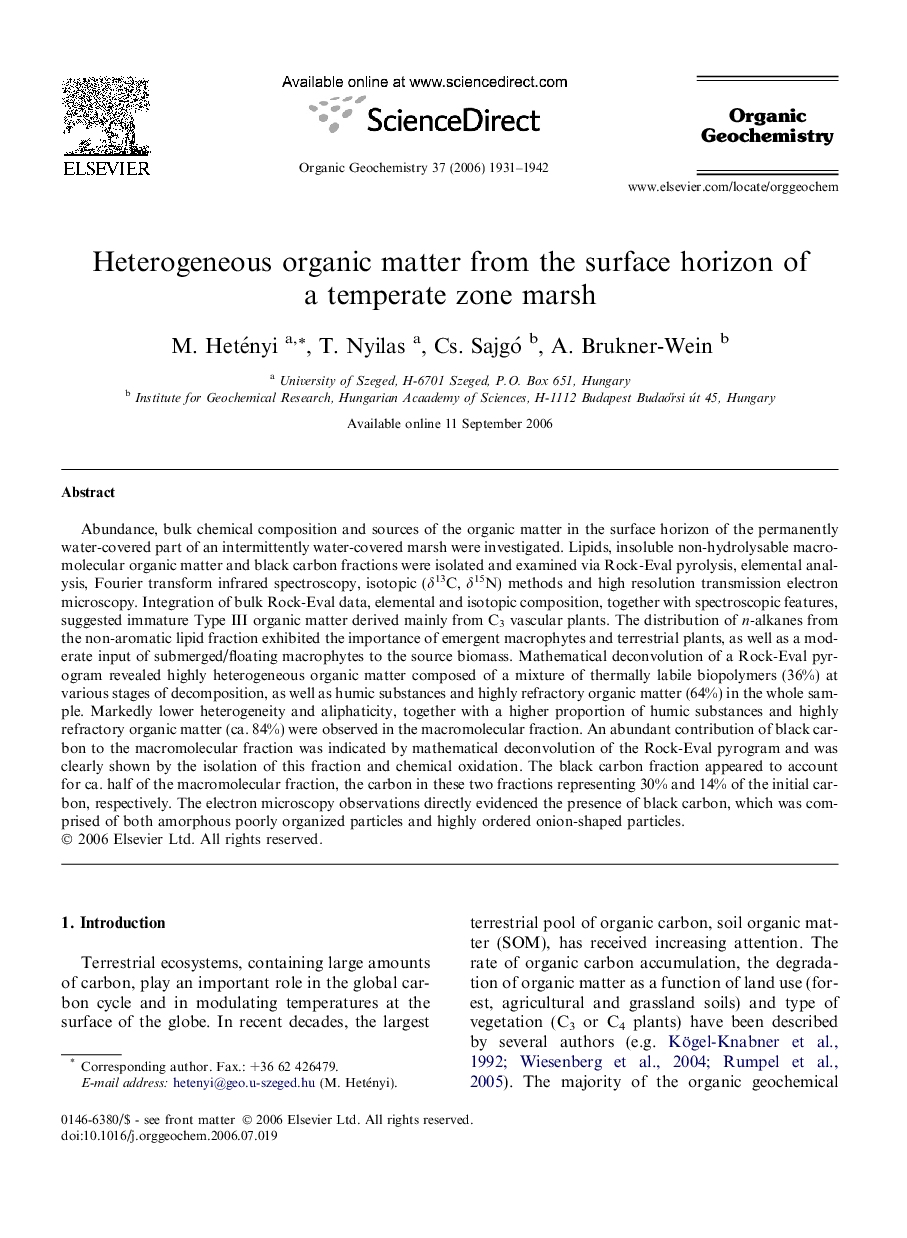| کد مقاله | کد نشریه | سال انتشار | مقاله انگلیسی | نسخه تمام متن |
|---|---|---|---|---|
| 5162984 | 1379763 | 2006 | 12 صفحه PDF | دانلود رایگان |
عنوان انگلیسی مقاله ISI
Heterogeneous organic matter from the surface horizon of a temperate zone marsh
دانلود مقاله + سفارش ترجمه
دانلود مقاله ISI انگلیسی
رایگان برای ایرانیان
موضوعات مرتبط
مهندسی و علوم پایه
شیمی
شیمی آلی
پیش نمایش صفحه اول مقاله

چکیده انگلیسی
Abundance, bulk chemical composition and sources of the organic matter in the surface horizon of the permanently water-covered part of an intermittently water-covered marsh were investigated. Lipids, insoluble non-hydrolysable macromolecular organic matter and black carbon fractions were isolated and examined via Rock-Eval pyrolysis, elemental analysis, Fourier transform infrared spectroscopy, isotopic (δ13C, δ15N) methods and high resolution transmission electron microscopy. Integration of bulk Rock-Eval data, elemental and isotopic composition, together with spectroscopic features, suggested immature Type III organic matter derived mainly from C3 vascular plants. The distribution of n-alkanes from the non-aromatic lipid fraction exhibited the importance of emergent macrophytes and terrestrial plants, as well as a moderate input of submerged/floating macrophytes to the source biomass. Mathematical deconvolution of a Rock-Eval pyrogram revealed highly heterogeneous organic matter composed of a mixture of thermally labile biopolymers (36%) at various stages of decomposition, as well as humic substances and highly refractory organic matter (64%) in the whole sample. Markedly lower heterogeneity and aliphaticity, together with a higher proportion of humic substances and highly refractory organic matter (ca. 84%) were observed in the macromolecular fraction. An abundant contribution of black carbon to the macromolecular fraction was indicated by mathematical deconvolution of the Rock-Eval pyrogram and was clearly shown by the isolation of this fraction and chemical oxidation. The black carbon fraction appeared to account for ca. half of the macromolecular fraction, the carbon in these two fractions representing 30% and 14% of the initial carbon, respectively. The electron microscopy observations directly evidenced the presence of black carbon, which was comprised of both amorphous poorly organized particles and highly ordered onion-shaped particles.
ناشر
Database: Elsevier - ScienceDirect (ساینس دایرکت)
Journal: Organic Geochemistry - Volume 37, Issue 12, December 2006, Pages 1931-1942
Journal: Organic Geochemistry - Volume 37, Issue 12, December 2006, Pages 1931-1942
نویسندگان
M. Hetényi, T. Nyilas, Cs. Sajgó, A. Brukner-Wein,